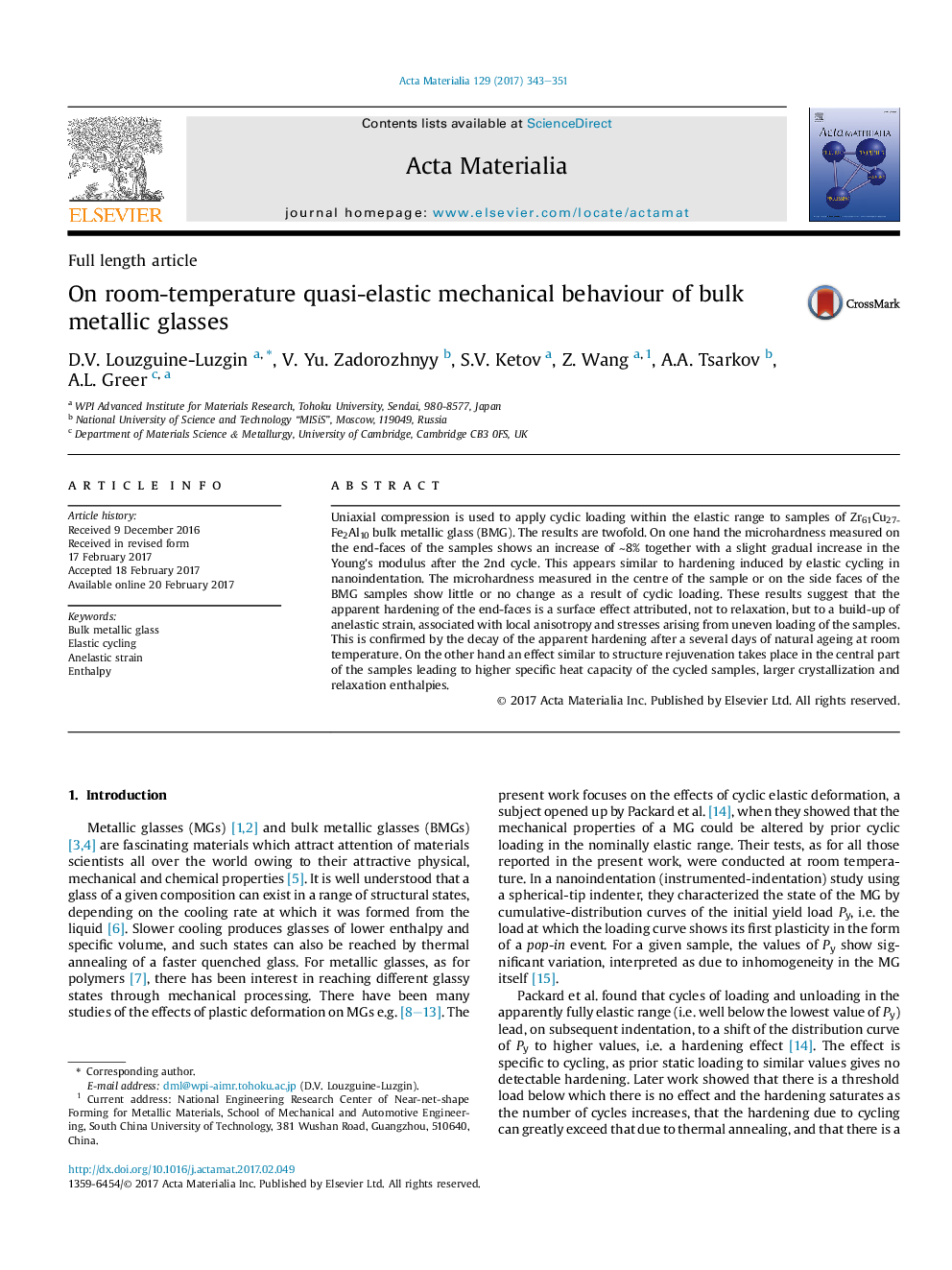| Article ID | Journal | Published Year | Pages | File Type |
|---|---|---|---|---|
| 5436230 | Acta Materialia | 2017 | 9 Pages |
Uniaxial compression is used to apply cyclic loading within the elastic range to samples of Zr61Cu27Fe2Al10 bulk metallic glass (BMG). The results are twofold. On one hand the microhardness measured on the end-faces of the samples shows an increase of â¼8% together with a slight gradual increase in the Young's modulus after the 2nd cycle. This appears similar to hardening induced by elastic cycling in nanoindentation. The microhardness measured in the centre of the sample or on the side faces of the BMG samples show little or no change as a result of cyclic loading. These results suggest that the apparent hardening of the end-faces is a surface effect attributed, not to relaxation, but to a build-up of anelastic strain, associated with local anisotropy and stresses arising from uneven loading of the samples. This is confirmed by the decay of the apparent hardening after a several days of natural ageing at room temperature. On the other hand an effect similar to structure rejuvenation takes place in the central part of the samples leading to higher specific heat capacity of the cycled samples, larger crystallization and relaxation enthalpies.
Graphical abstractDownload high-res image (220KB)Download full-size image
